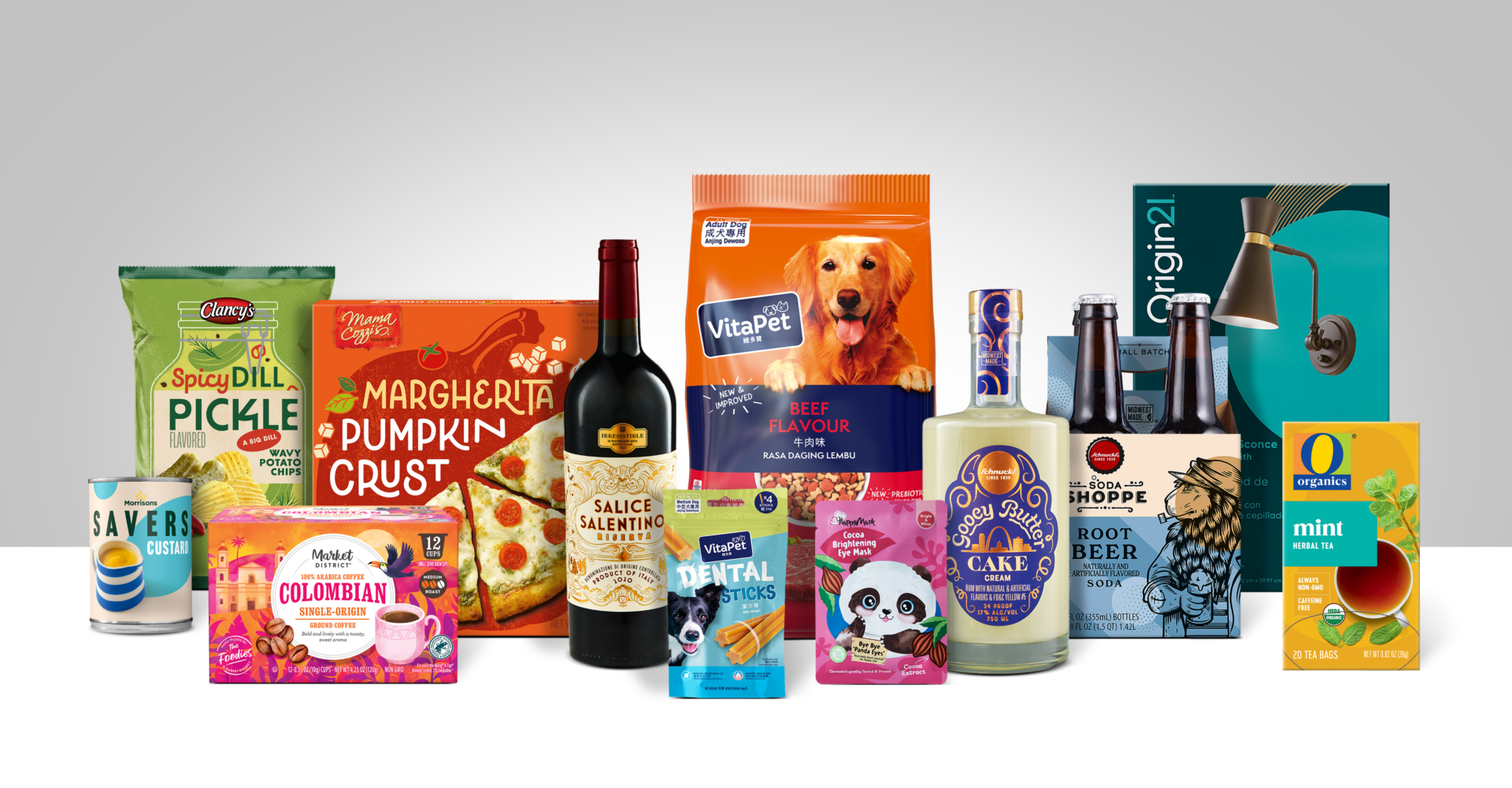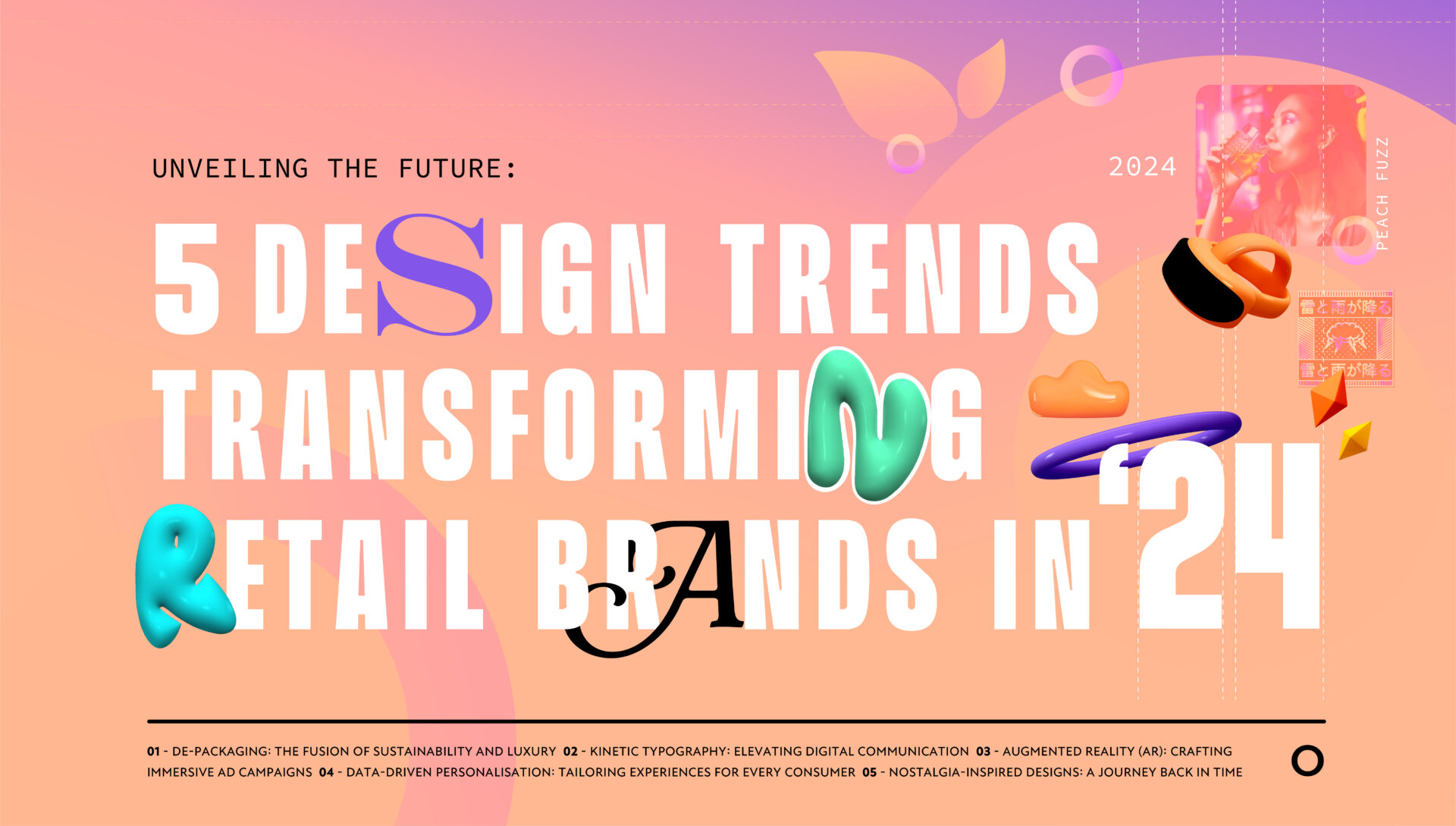What’s hot for 2023?
What’s so important about packaging trends right now? Well, paying attention to the latest packaging trends is particularly crucial in this moment because when dramatic shifts in consumer behaviour have historically occurred, these cultural tsunamis have triggered an influx of new packaging products and other innovations which ultimately led to new corporate and value chain structures.
As we are currently situated on the tail end of the pandemic-era sea change in consumer behaviour and preferences, it stands to reason that packaging innovations are likely to grow exponentially in the near future. Thus, so that we, as packaging and branding creatives, our client partners and our wider stakeholders can stay on top of or ahead of the curve and thus remain relevant and hold a leadership position in the conversation on packaging, staying attuned to trends and their respective evolutions in 2023 are of vital importance.
So, without further ado, let’s dive into three of the biggest packaging trends that will look to escalate in 2023…
Sustainability
With COP27 and high-profile climate protests occupying national news headlines and the minds of many consumers, an ambitious sustainability agenda has become the remit for more and more brands. While sustainability isn’t a new trend, it is one that is experiencing a pronounced evolution, accelerated by widespread shifts in legislation and the growth of infrastructure to support circular economic product lifecycles in alignment with the environmentally minded goals of brands and consumers alike.
Recyclable, Compostable, Reusable. Cracking the plastics pollution crisis won’t be possible without ambitious plans by brands to scale up packaging having one or more of these criteria. Whilst some of the biggest users of virgin plastic in food and beverage struggle to make real progress in meeting targets, other brands, particularly in cosmetics, are steadily improving their sustainability – and gaining better reputations in the process.
Refillables often factor heavily in successful sustainability initiatives. Notably, Unilever has reduced its use of virgin plastic by 15% since its baseline year of 2018, and has been a market leader in refillable deodorants. Meanwhile, a number of perfume brands have introduced refillable bottles, such as Chloé’s new rose natural intense perfume, which is made with 100% natural ingredients and offering a 100% recycled content refill option. In make-up, Charlotte Tilbury, Hourglass and Victoria Beckham Beauty have all bet big on refillables, with sales figures looking promising indeed.
Other sustainability trends we could see proliferating in future include nutrition information-like sustainability fact boxes and recycling incentivisation programs.
Accessibility
While packaging must primarily be designed for the product it contains, the design also needs to pay attention to the person who will ultimately buy, open, and place the pack within their home. Aligning with goals to improve their inclusivity, many brands are working to make their product packaging more accessible. For example, Proctor & Gamble’s easy-open lid moisturizers, released last year, was designed with wings and textured cover for easier gripping, and with Braille lettering, while Unilever launched the ‘world’s first’ adaptive design deodorant package.
In each instance, the packaging incorporates key features that make unboxing the item a smoother process, such as texture, handles, and/or loops. Accessible packaging may be considered still in its infancy and there is still much work to be done in exploring the needs and wants of disabled consumers. However, many brands are determined to ask the right questions, listen closely to customer feedback, and improve on existing designs, for better inclusivity and more positive overall response to new products and ranges.
Digital Interactivity – Games and the Metaverse
Over the last year, more dollars have been invested in tech companies than in any other sector worldwide. With so much investment into technology going on, it stands to reason that digital technology, including social media, will be increasingly fertile ground in which to market products and services to potential customers.
Lots of brands are already connecting with customers and engaging with them in this way. From supplemental information around ingredient provenance to pack recyclability details to an NFT character or receipt to a game they can play against other customers, there’s almost no limit to the kinds of digital engagement your brand can leverage to build connections with consumers.
Let’s take two examples from the wine & alcohol space; first, Chronic Cellars’ Purple Paradise wine bottles, which uses QR codes to connect wine enthusiasts with an interactive, gamified AR experience in which brand mascots are brought to life. And the second, Swigr beer cans, which also use an AR app allowing customers to play a retro-inspired ‘Invaders’ game using the product packaging and a mobile device. Both campaigns are designed to build the recognition among the brands’ respective target audiences, increase footprint and to associate the brand with a fun, digitally native persona – and they tick those boxes handily.
Finally, we’d be remiss without covering the fast-emerging platform available to brands via the metaverse. If you’re not yet familiar with the term metaverse, it refers to virtual worlds which can be accessed through PCs, game consoles, and increasingly through phones. Some say the metaverse is best characterized as an evolution of today’s internet. It thus presents a new opportunity for brands to help shape the future of advertising, so that they are as much a part of tomorrow’s virtual worlds as they are a part of the internet at present.
Virtual retail is one future possibility for the metaverse, so brands should be considering how their packaging may need to change to better suit the virtual world… not unlike how it was necessary to fit into the world of ecommerce.
In summary, there’s no shortage of points to consider as brands look ahead to 2023. We can already see that it’s going to be a year that’s full to the brim with opportunities and challenges – and a very exciting time for the world of packaging design.















